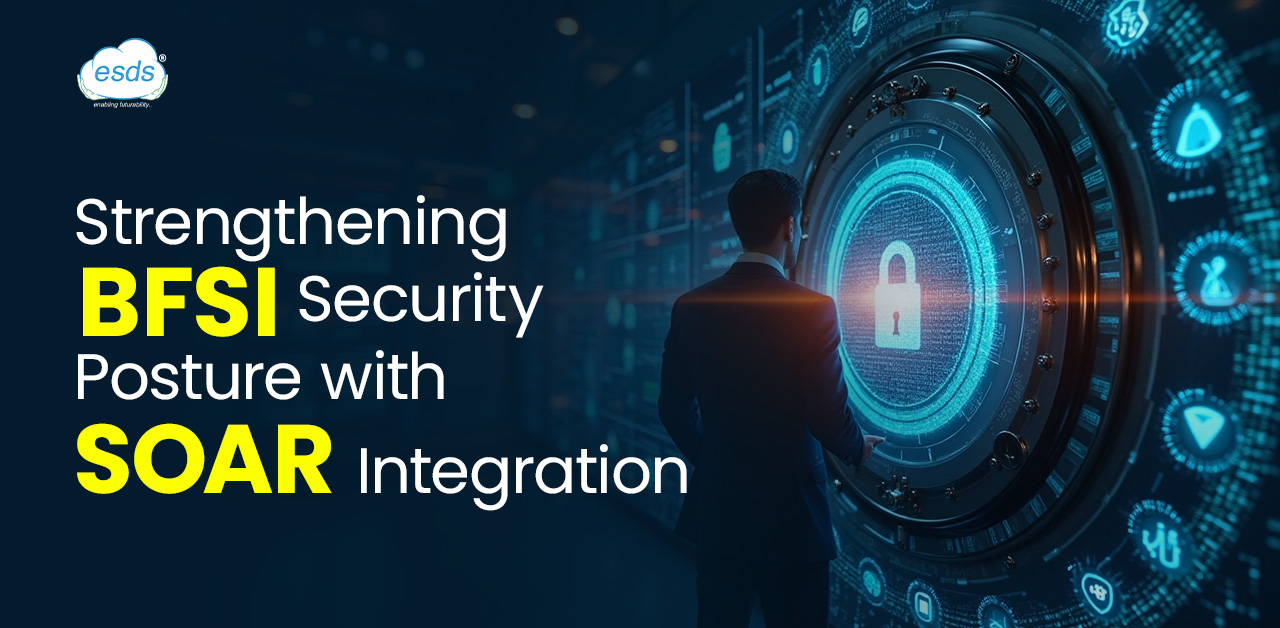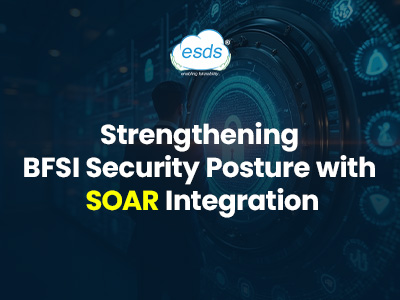Strengthening BFSI Security with SOAR Integration in India

Security threats in the BFSI sector aren’t new—but the velocity and sophistication of attacks have changed significantly. For institutions already dealing with massive digital workloads, manual security operations are no longer sustainable. This is where Security Orchestration, Automation, and Response (SOAR) finds relevance—not as a buzzword, but as a practical shift for operational resilience.
Why BFSI Needs Automation in Security Operations
Banks, insurance companies, and financial institutions are often burdened with legacy security systems layered with modern applications. The mix leads to fragmented alerts, reactive responses, and human-intensive processes. When seconds matter in mitigating a breach, any delay becomes costly—not just financially but reputationally.
BFSI automation is not just about reducing human effort. It’s about integrating disparate tools, improving the signal-to-noise ratio, and aligning security outcomes with regulatory and business priorities. With compliance mandates such as RBI’s cybersecurity guidelines and growing expectations from customers for data protection, automation brings repeatability and accountability to security actions.
SOAR for Banks: Moving from Reactive to Structured Response
At its core, SOAR for banks consolidates multiple security tools into a unified platform. It enables orchestration of workflows, automation of repetitive tasks, and guided incident response. For example, phishing alerts can be enriched with threat intelligence, checked against user activity, and contained—without requiring multiple dashboards or manual checks.
But more importantly, SOAR doesn’t replace human judgment. Instead, it augments analysts’ ability to handle high-volume incidents while escalating complex cases with all necessary context. This allows financial institutions to optimize response time without compromising control.
Incident Response in Banking: What’s Broken?
Incident response in banking has traditionally been ticket-based and sequential. A detection system flags an anomaly, a ticket is created, and a security analyst begins triaging. Often, this involves looking up logs, running threat intelligence searches, and contacting other teams. The cycle is time-consuming. With incident response banking models supported by SOAR, the playbooks are predefined. An alert from a fraud detection system can trigger a sequence where user behavior is analyzed, logs are pulled, and containment actions (like disabling a user session or card) are executed—all in real time. This doesn’t just reduce Mean Time to Detect (MTTD) and Mean Time to Respond (MTTR); it introduces traceability and standardization into an otherwise ad hoc process.
Key Components of BFSI SOAR Services in India

The adoption of BFSI SOAR services in India has seen traction with both public and private sector banks, driven by operational demands and regulatory audits. The core components include
- Playbook Management: Custom workflows for threat types such as fraud attempts, unauthorized access, or suspicious internal activity.
- Threat Intelligence Integration: Enriching alerts with data from global and national CERTs, open-source feeds, and internal telemetry.
- Case Management: Centralized incident tracking that connects alerts to investigations and compliance reporting.
- Automation Connectors: Pre-built integrations with email, endpoint detection, SIEMs, and authentication systems.
- Audit Trails: Ensuring all incident handling steps are logged and reviewable, in line with audit requirements.
These services allow institutions to focus on response strategy while the underlying operations are system-driven and scalable.
Implementation Realities: Where SOAR Fits—and Where It Doesn’t
SOAR is not a plug-and-play solution. Integration into a BFSI environment requires careful assessment of current tooling, maturity of internal processes, and clarity on incident response goals.
Challenges in SOAR adoption often include:
- Tool Sprawl: Too many disconnected security tools with overlapping functions.
- Process Gaps: Lack of standardized response plans makes automation difficult to implement.
- Skill Shortages: Limited availability of professionals who can design and manage SOAR workflows.
- Change Management: Resistance from teams used to manual control and intervention.
To navigate these, many institutions opt for managed or hybrid models of BFSI SOAR services in India—ensuring faster deployment and access to playbook libraries specific to banking and financial services.
SOAR for Banks
A mid-sized cooperative bank using a SOAR platform in India reported a significant reduction in time spent on phishing investigations. Another nationalized bank integrated SOAR with their fraud analytics engine, allowing faster containment of high-risk account activity.
These outcomes are not driven by technology alone but by the alignment of response workflows with risk posture and compliance goals. More importantly, success metrics are moving from just MTTD/MTTR to qualitative indicators like false positive reduction, audit readiness, and analyst productivity.
Compliance and Reporting
SOAR doesn’t just improve response—it strengthens reporting. For BFSI institutions, this is crucial. Internal audits, regulatory reviews, and compliance checks often require extensive documentation of how incidents were handled.
Automated case management and audit trails built into SOAR platforms make this process efficient and transparent. They also reduce reliance on individual memory or siloed logs—ensuring continuity and governance.
In regulated markets like India, where authorities such as RBI, SEBI, and IRDAI scrutinize cyber practices, this becomes a strategic advantage.
Where Does ESDS Fit In?
With over 19 years in cloud and security services, ESDS delivers BFSI SOAR services in India through a managed approach. By integrating SOAR capabilities with its Security Operations Center (SOC), ESDS enables banks and financial institutions to gain centralized control over security events, orchestrate faster responses, and comply with audit trails. For institutions that already rely on ESDS for hosting or cloud workloads, the integration is seamless—reducing friction and offering a single point of accountability. Whether it’s playbook design, real-time alert handling, or compliance-focused dashboards—ESDS brings domain familiarity and operational maturity. The real value of SOAR lies in giving BFSI teams control—not in removing them from the loop. It’s about responding faster, smarter, and in ways that align with both risk appetite and customer trust. For institutions exploring automation, starting with high-frequency incident types and scaling iteratively ensures smoother adoption. And with mature offerings like SOAR for banks and incident response banking solutions now available through providers like ESDS, the path forward doesn’t have to start from scratch.
To explore how your institution can modernize its security operations while meeting regulatory expectations, talk to ESDS about its SOAR and private cloud integration services.
Disclaimer
“ESDS Software Solution Limited is proposing, subject to receipt of requisite approvals, market conditions and other considerations, to make an initial public offer of its equity shares and has filed a draft red herring prospectus (“DRHP”) with the Securities and Exchange Board of India (“SEBI”) that is available on the website of the Company at https://www.esds.co.in/, the website of SEBI at www.sebi.gov.in as well as on the websites of the book running lead managers, DAM Capital Advisors Limited at https://www.damcapital.in/ and Systematix Corporate Services Limited at http://www.systematixgroup.in/ The website of the National Stock Exchange of India Limited at www.nseindia.com and the website of the BSE Limited at www.bseindia.com, respectively. Investors should note that investment in equity shares involves a high degree of risk. For details, potential investors should refer to the RHP which may be filed with the Registrar of Companies, Maharashtra, at Mumbai, in the future, including the section titled “Risk Factors.” Potential investors should not rely on the DRHP filed with SEBI in making any investment decision.”
- 7 Steps to Build a Strong Data Sovereignty Framework - November 3, 2025
- 7 Proven GPUaaS Steps for PSU Success and Secure Resilience - September 26, 2025
- How Tier III DCs Deliver Sovereign Data Security You Can Trust - September 5, 2025
